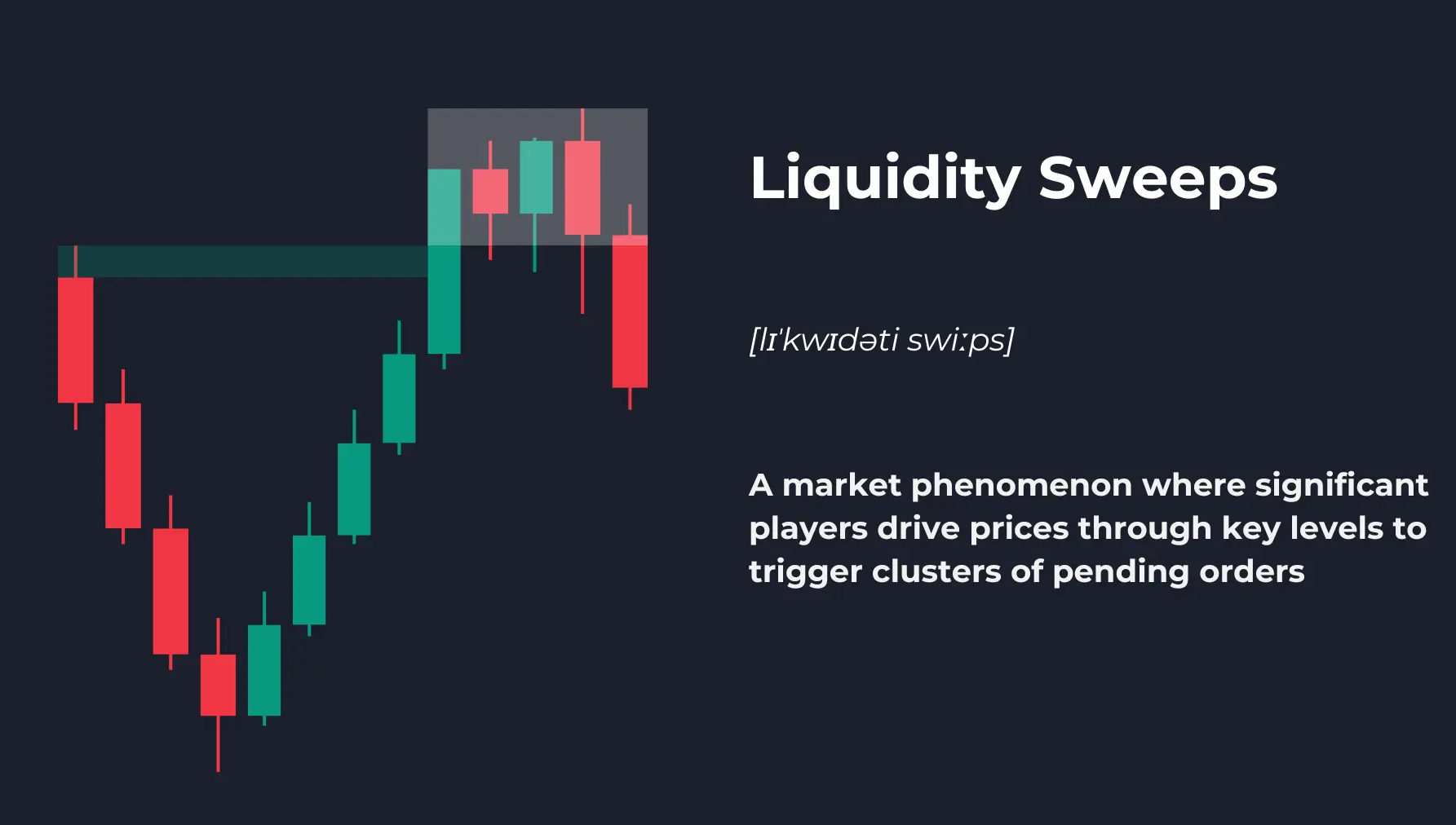In forex trading, many beginners lose money because they don’t understand how the market really works. Big players—often called “smart money”—use techniques like liquidity sweeps and inducement to trap retail traders. If you can learn to spot these setups, you can trade with the institutions instead of against them.
This guide will explain what liquidity sweeps and inducements are, and how you can trade them step by step.

1. What Is a Liquidity Sweep?
A liquidity sweep happens when price moves beyond a key level (like support, resistance, or a recent high/low) to trigger stop-losses and capture liquidity, then quickly reverses in the opposite direction.
•Example: Price pushes above resistance, takes out buy stops, and then falls sharply.
•Purpose: Big players need liquidity to enter large positions, so they “sweep” the market for stops before moving in their intended direction.
Think of it as a fake breakout designed to trap traders.
2. What Is Inducement?
Inducement is when the market tempts traders to enter early before the “real” move happens. It creates setups that look obvious—like clean support or resistance levels—so that retail traders take positions, providing liquidity for institutions.
•Example: Price forms a clear double top. Retail traders sell, but then the market breaks higher to sweep their stops.
•Purpose: To “induce” traders into the wrong side of the market.
3. How to Identify Liquidity Sweeps
Here’s what to look for on your chart:
1.Obvious levels – recent highs, lows, support, or resistance.
2.Sharp wicks/spikes – quick moves above/below the level followed by reversal.
3.Volume increase – strong activity around the sweep area.
4. How to Identify Inducement
Look for signs the market is setting a trap:
•Price builds liquidity near a key zone (equal highs/lows, trendline touches).
•Market tempts traders to enter early.
•A sweep usually follows to hit their stop losses before the true move begins.
5. How to Trade Liquidity Sweeps and Inducement (Step-by-Step)
Step 1: Mark liquidity zones
•Identify equal highs/lows, support, resistance, and trendline touches.
Step 2: Wait for a sweep
•Let price run above/below the zone. Don’t enter too early.
Step 3: Confirm reversal
•Look for rejection candles (pin bars, engulfing candles) or lower timeframe structure break.
Step 4: Enter the trade
•Trade in the opposite direction of the sweep.
•Example: Sweep above resistance → enter short after rejection.
Step 5: Manage risk
•Place stop-loss above/below the sweep wick.
•Target imbalance zones, previous swing points, or Fibonacci retracement levels.
6. Pro Tips for Trading Liquidity and Inducement
•Be patient – most sweeps happen around London or New York sessions.
•Combine with supply & demand zones for better accuracy.
•Use multiple timeframes – higher timeframe levels give stronger sweeps.
•Risk management is key – not every sweep leads to reversal.
Final Thoughts
Liquidity sweeps and inducements are powerful concepts that help you see how the “smart money” moves the market. Instead of getting trapped like retail traders, you can use these setups to your advantage.
The key is to wait for the sweep, confirm the reversal, and trade with discipline. Over time, this strategy can greatly improve your forex trading results.
Disclaimer
This article is for educational purposes only and does not provide financial or investment advice. Forex trading involves significant risk and may not be suitable for all investors. Always do your own research and consult with a licensed financial advisor before trading.


